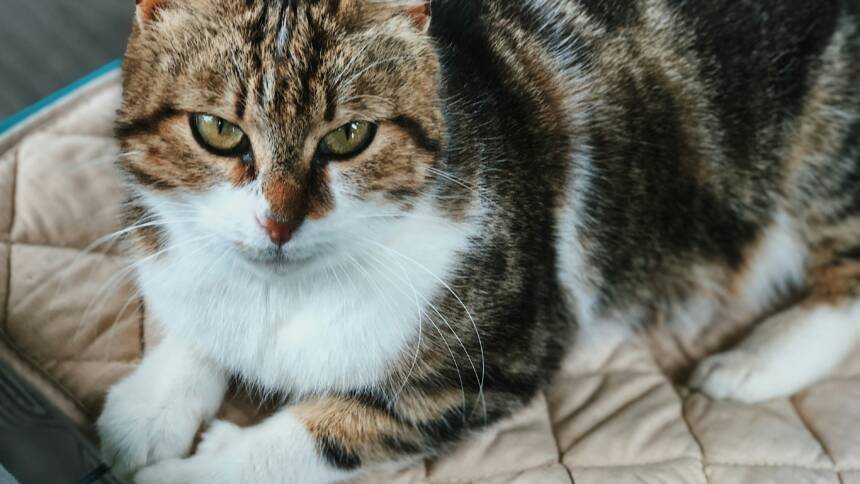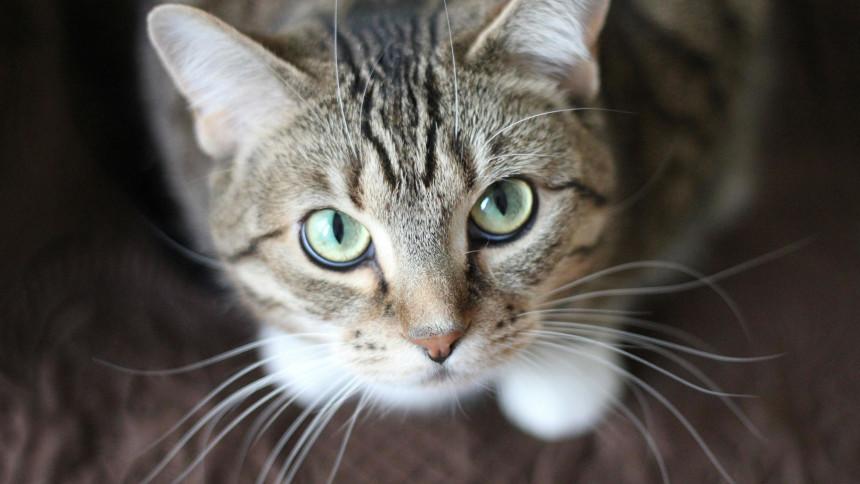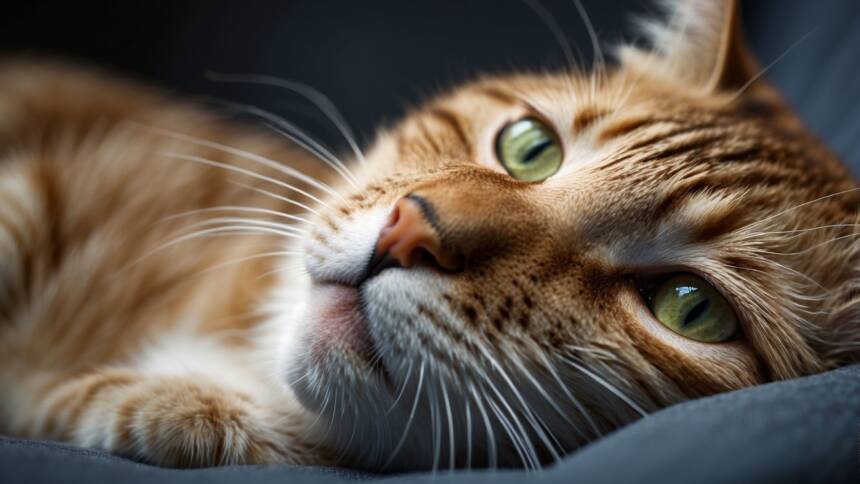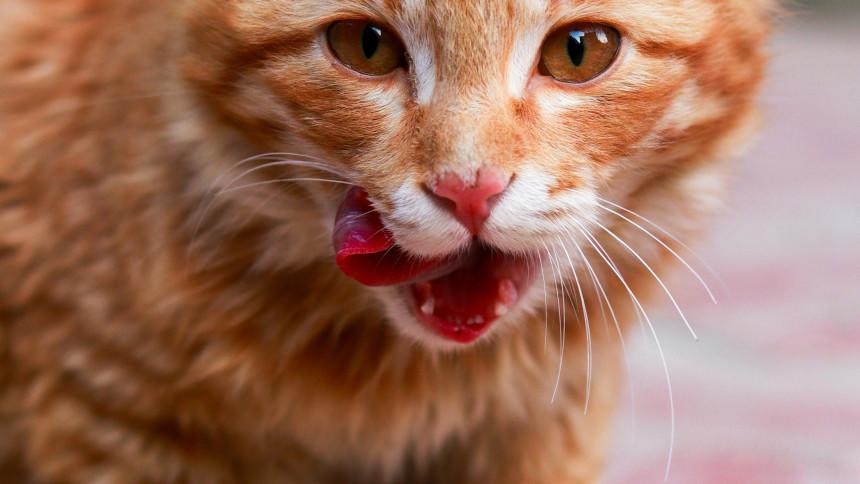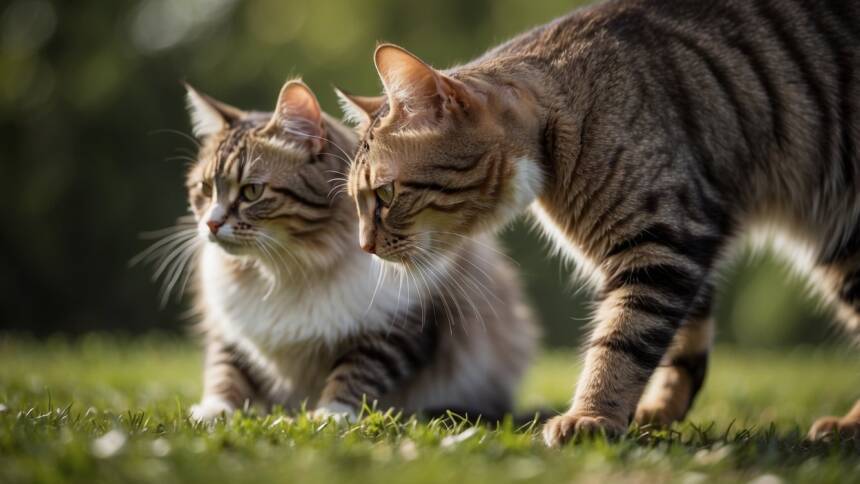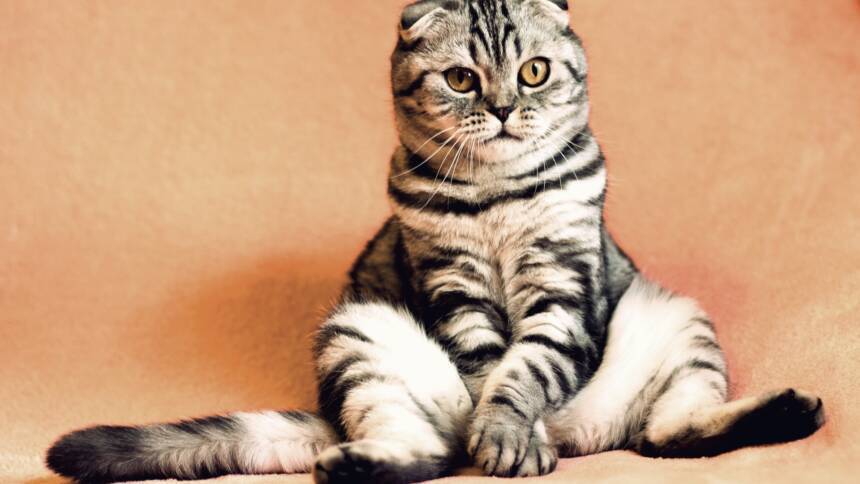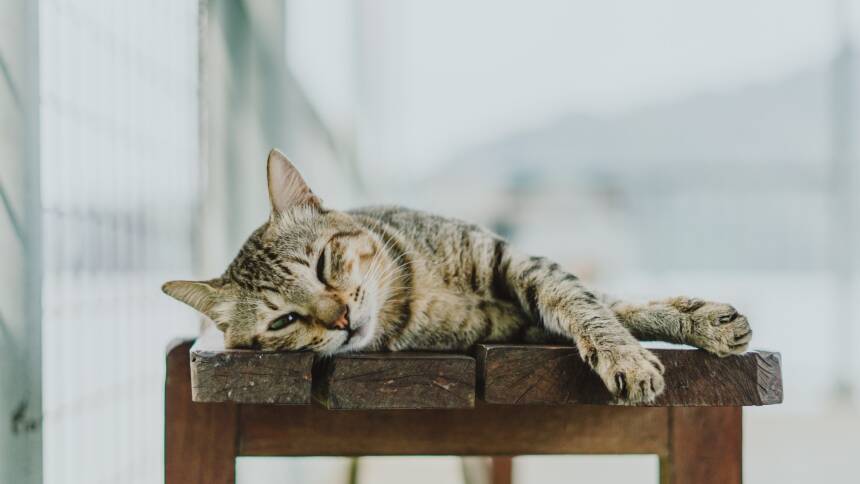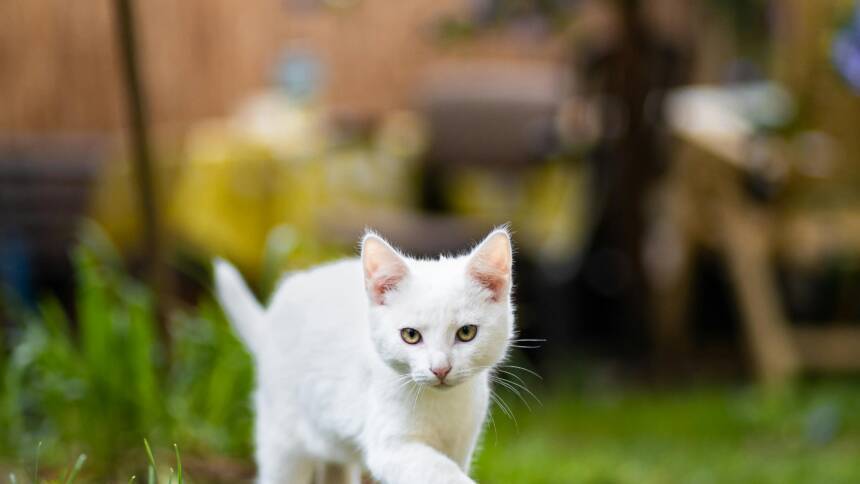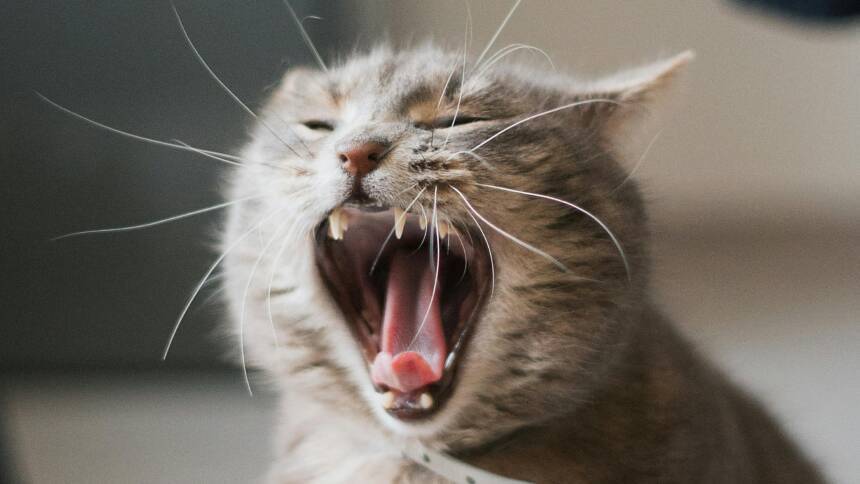Cats typically captivate with their diverse range of breeds, each exhibiting unique traits and characteristics. Among these, tailless cat breeds stand out due to their distinct lack of a traditional feline tail. This unique feature can be attributed to genetic mutations that result in varying tail lengths, from short stumps to complete absence, which is scientifically known as anury. These tailless cats possess a charm that has fascinated cat enthusiasts and pet owners alike, with breeds like the Manx, Japanese Bobtail, and American Bobtail leading the pack in fame and recognition for their peculiar rear ends.
The Manx cat is often the first breed to come to mind when considering tailless cats. Originating from the Isle of Man, Manx cats showcase a spectrum of tail lengths from the “rumpy,” which has no tail at all, to the “rumpy riser,” with just a hint of a tail bone. The genetic mutation responsible for this trait has been naturally propagated through the isolated population on the island. Contrary to some beliefs, the absence of a tail does not affect a cat’s balance or agility. Manx cats are known for their robust health, friendly demeanor, and adaptability to various living situations.
Tailless breeds are not just a curiosity; they hold a significant place in feline history and culture. The Japanese Bobtail, for instance, has been depicted in traditional folklore and art, symbolizing good fortune. The genetics behind their short tails are distinct from those found in Manx cats, highlighting the diverse evolutionary paths within tailless cat breeds. Each breed exhibits its unique blend of physical attributes, personality traits, and history, presenting a rich selection for potential cat owners looking for a pet that is as distinctive in appearance as it is in character.
History and Origin
The Manx cat is a feline breed renowned for its distinctive taillessness. This trait, along with its origins, can be traced back to the Isle of Man, where the breed emerged due to a natural genetic mutation.
Isle of Man and the Manx Breed
The Isle of Man, a small island in the Irish Sea, is recognized as the birthplace of the Manx cat. Historical accounts suggest that this breed has existed for centuries on the island. By the mid-18th century, these cats became notable for their absence of a tail, and this feature was passed down through generations. The Manx was one of the first breeds to be showcased in cat shows in Britain, starting with the London cat show in 1871, solidifying its status as an established breed.
Genetic Mutation and Taillessness
The defining characteristic of a Manx cat is its taillessness, which is the result of a natural genetic mutation. This mutation affects the T-box gene, which controls tail development in the embryo. Manx cats can exhibit varying degrees of taillessness, from complete absence, known as ‘rumpy’, to a short stub, referred to as ‘stumpy’. This mutation is dominant, meaning that it only requires one parent to pass on the trait. However, careful breeding is essential to avoid health issues associated with the gene.
Physical Characteristics
In exploring the unique aspect of tailless cats, the physical characteristics of these breeds are distinct and easily identifiable. These features range from the varied tail presentations to the specifics of coat and eye color.
Breed Appearance
Tailless cat breeds like the Manx and Japanese Bobtail exhibit a robust and rounded appearance. The Manx, in particular, is characterized by a short front and notably longer hind legs, contributing to a rounded rump and a generally rounded appearance. The Japanese Bobtail, distinguishable by its pom-pom-like tail, has a history that traces back centuries, and is not only a short-tailed breed but is also a symbol of good luck in its country of origin.
Tail Variations
The most defining feature of these cats is their tails, or rather the lack thereof. Ranging from entirely tailless or “rumpy” cats, as seen in some Manx specimens, to cats with short tails such as the bobbed tail of a Japanese Bobtail, which is typically a few inches in length. This variation is due to a genetic mutation affecting tail development.
- No Tail (Rumpy): Completely tailless, often seen in the Manx breed.
- Short Tail: A very short tail consisting of one to three vertebrae, characteristic of bobtail breeds.
Coat and Eye Color
Both longhaired and shorthaired varieties can be found among tailless breeds. The Manx cat, for instance, may possess either a long, double coat or a short, dense coat. Eye color among these breeds tends to be striking and can vary widely, often observed as shades of gold.
- Coat Length:
- Long: Double coat, plush.
- Short: Dense, plush.
- Eye Color:
- Commonly a variation of gold.
Each of these cats possesses a unique combination of these characteristics, contributing to the diverse and captivating nature of tailless cat breeds.
Personality and Behavior
Tailless cats, like the Manx, are known for their charming personalities and engaging behaviors. These felines typically exhibit a blend of affection, playfulness, and intelligent communication methods.
Social and Affectionate Nature
Tailless cats are often very sociable and enjoy being around humans and other pets. They have a reputation for being particularly friendly and affectionate, seeking out human companionship and often thriving on attention and interaction.
Playfulness and Intelligence
When it comes to play, these cats are playful and intelligent, using their agile bodies to chase, jump, and engage in interactive activities. Their intelligence makes them quick learners, able to engage with puzzle toys and even learn tricks or commands.
Communication and Vocalization
In terms of communication, tailless cats may use other body language cues due to the absence of a tail. They are typically not overly vocal, but when they do choose to vocalize, it’s often a means to communicate their needs or desires to their human companions. They use a range of meows, purrs, and body language to express themselves effectively.
Health Concerns
Cats without tails, while unique in appearance, may face specific health challenges. Understanding these can help ensure their well-being and longevity.
Health Issues Linked to Taillessness
Spine and Nerve Problems: Tailless cats can suffer from bone deformities within their spine. Conditions such as Manx syndrome are characterized by a mutation that affects the tail’s development, leading to a spine that may end abruptly. This genetic issue can also impair the nerve supply to vital organs, potentially causing incontinence or digestion problems.
Arthritis: Premature arthritis can be a concern for tailless cats due to abnormal stresses on their spines. Their mobility may be compromised, and pain management may become a necessary part of their care.
General Health and Lifespan
Lifespan and General Health: While a tailless cat can have a normal lifespan, their overall health may be influenced by their tail status. Genetic conditions tied to the absence of a tail may predispose them to certain illnesses. However, with appropriate care and regular veterinary checkups, these cats can live a full life.
Genetic Illnesses: Besides the physical implications, genetic anomalies associated with taillessness may lead to a heightened risk of other hereditary conditions. Owners should be aware and vigilant for signs of such illnesses.
Caring for a No-tail Cat
Routine Monitoring: Regular veterinary visits are crucial for tailless cats. They allow for early detection and management of potential health issues such as spine-related conditions or impacted digestion.
Special Attention: These cats may require adjustments in their living spaces to accommodate mobility limitations. Owners should also be observant of any changes in their cat’s behavior, which could indicate discomfort or pain.
By recognizing and addressing these health concerns, owners can help ensure that their tailless cats lead comfortable and healthy lives.
Breed Variations
Exploring tailless cat breeds reveals a unique feature in feline genetics: taillessness. This section delves into the world of tailless cat breeds, highlighting their distinctive traits and the genetic ties between certain breeds.
Different Tailless Cat Breeds
Taillessness in cats can range from a complete absence of a tail to a very short stump. The following breeds exhibit this trait:
- Manx Cat: This breed is known for its absence of a tail, hailing from the Isle of Man. Manx cats showcase variations in tail length—ranging from “rumpy” with no tail whatsoever to “longy” with a short tail.
- Cymric Cat: Often considered a long-haired variant of the Manx, the Cymric also displays varying degrees of taillessness.
- American Bobtail: Exhibits a natural tail that is typically one third to one half the length of a normal cat’s tail.
- Kurilian Bobtail: This breed boasts a naturally occurring pom-pom-like short tail.
- Highlander Cat: Known for their short tails and lynx-like appearance, Highlanders are a relatively new breed.
- Japanese Bobtail Cat: Characterized by its short, “pom-like” tail, the Japanese Bobtail has a rich history in its native country.
- Pixie-Bob Cat: This breed may have a tail, but it’s usually shorter than the average cat’s, with a similar appearance to the American Bobtail.
- Mekong Bobtail: With origins linked to the Siamese cat, this breed features a distinctive “kinked” short tail.
- Karelian Bobtail: Originating from Russia, this breed presents with a naturally bobbed tail.
The Manx and Cymric Connection
The Manx and Cymric cats share an interesting genetic connection. Both breeds exhibit the tailless gene, but the Cymric is distinguished by its long, luxurious coat compared to the Manx’s shorter one. Despite the difference in fur length, these breeds otherwise share a remarkably similar appearance and both have the tail variations known in Manx cats—rumpy, rumpy riser, stumpy, and longy. Taillessness in these breeds is due to a genetic mutation that affects the development of the spine, with the most notable outcome being the variety of tail lengths, from nonexistent to just a hint of a tail.
Living with a Tailless Cat
Tailless cats, such as the Manx, make intriguing and affectionate companions. They possess the same charm and personality as tailed breeds, but require specific attention in certain aspects of their care.
Compatibility with Families
Tailless cats are typically known for their high affection levels and often integrate well into family settings. They tend to be kid-friendly and can adapt to living harmoniously with other family pets. However, the family must understand the unique body language of a tailless cat, as they cannot express themselves with tail movements. It is important to observe their other methods of communication to ensure they are comfortable.
- Family: Highly compatible, enjoy social interaction
- Kid-Friendly: Generally patient, but interactions should be supervised
- Pet-Friendly: Can get along with other pets if introduced properly
Training and Activities
These cats are usually intelligent and can learn tricks or enjoy various activities, including playing with toys that stimulate their natural hunting instincts. Their level of playfulness can be high, making them engaging pets. Tailless cats can sometimes be trained to walk on a leash, providing them with safe outdoor experiences. Regular playtime and mental stimulation are key to their well-being.
- Playfulness: Engaging toys and games are recommended
- Tricks: Capable of learning, positive reinforcement is effective
- Leash Training: Possible with patience and the right harness
Grooming Needs
The grooming requirements for tailless cats vary depending on their coat length, but all will benefit from weekly brushing to remove dead hair and distribute skin oil. This not only helps maintain a healthy coat but also reduces the amount of shedding in the home.
Grooming:
- Short-haired: Weekly brushing suffices
- Long-haired: May require more frequent brushing to prevent tangles
Regular grooming sessions reinforce the bond between the cat and their owner, and they offer an opportunity to check for skin issues that could be concealed by their coat. Because they lack a tail to swish away irritants, tailless cats might need their owners to be more vigilant about cleanliness in their hindquarters area.
Adoption and Care
When adopting a tailless cat, prospective owners should consider the cat’s health and the nuances of care these unique pets require. Tailless cats often have a sweet demeanor and may be tolerant of strangers, but they also have specific needs in terms of health monitoring and environmental adaptation.
Choosing a Tailless Cat
When looking to adopt a tailless cat, it is essential to visit either shelters or a reputable breeder. Shelters can be an excellent place to find a cat that may be looking for a second chance at a loving home. Cats from shelters might come with known history, and shelter workers can provide insight into the cat’s personality and whether it’s known to be particularly sweet or tolerant of strangers. On the other hand, reputable breeders can offer lineage information, ensuring that the cat has been bred with attention to genetic health and temperament.
Health Assessment
Prior to adoption, a thorough health assessment by a veterinarian is crucial. Tailless cats can have unique health issues related to their spinal structure and balance, such as Manx Syndrome, which can affect their ability to move or control their bowels. New owners should assess the cat’s weight to ensure it does not become obese, as excess weight can exacerbate potential spinal issues.
Shedding and Grooming: Depending on their breed, tailless cats can have different amounts of shedding, so inquire about their shedding tendency to prepare for the necessary grooming.
Vocalization: Some cats with no tails might have a high tendency to vocalize, which can inform potential owners about their communication style.
Hunting Ability: If adopting a tailless cat breed known for being a good mouser, one should understand the cat’s need for mental stimulation and play that mimics hunting behaviors.
Spinal Structure and Function
The spinal structure significantly influences a cat’s balance and mobility. Genetics can lead to variations, such as taillessness, which impact these functions differently.
Impact of Taillessness on Balance
Cats typically use their tails for balance, especially during movement or while climbing. Tailless cats, such as the Manx breed, demonstrate that a tail is not an absolute requirement for balance, as they adapt by using different body mechanisms to compensate. However, these adaptations vary between individuals, and some may face challenges with balance-related activities.
Spinal Cord and Related Health Issues
The spinal cord is a critical component in the nervous system, and it extends from the brain through the vertebral column. In tailless cats or those with very short tails, known as rumpy, there can be a risk of spinal problems. The spine may end abruptly or irregularly, which can sometimes lead to neurological issues or physical disabilities. However, not all tailless cats suffer from such health problems, as the association depends on the specifics of their spinal structure.
